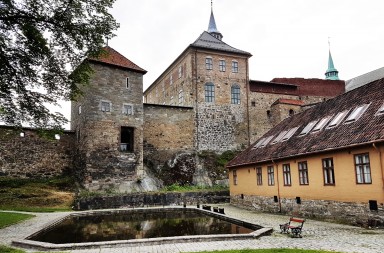On 22 July 2011 at 15:26, a car bomb exploded in Oslo at Regjeringskvartalet, the executive government quarter of Norway. Bjørn Arnesen, the captain of Oslo’s main fire station, was the first ranking officer at the scene. On the five-year commemoration of Norway’s terror attacks, Bjørn Arnesen recounts his experience of that day.
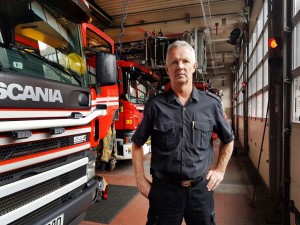
Born in Oslo in 1957, Bjørn Arnesen has been a fireman for 38 years, and is captain of the main station of the Oslo Fire and Rescue Department (Oslo Brann- og Redningsetat). On 22 July 2011, Bjørn Arnesen was due to start his shift at 17:00, but the Station Chief at the time had asked if he wouldn’t mind coming in earlier. “So I was here, around 15:00. There were about 10 of us sat here [a lounge room on the 3rd floor of Oslo Fire and Rescue Department office building] watching the Tour de France on TV.”
Bjørn remembers one of his colleagues received a phone call and went over to sit by the window to answer it. “When he came back and sat down, he told us: ‘I saw a policeman walk past with a gun, a helmet and a visor.’ So I thought that was strange, because we’re used to seeing guards so near the government building, but never with guns.” In particular, this struck Bjørn as strange because Norwegian police officers do not routinely carry firearms. Another colleague went over to the window to investigate, but didn’t notice anybody. “He returns to us and sits down, and then comes the blast, the bomb goes off.”
At 15:26, a car bomb exploded in Regjeringskvartalet (the executive government quarter of Norway), next to the tower block housing the office of then Prime Minister Jens Stoltenberg. At the fire station, Bjørn remembers, every open window in the room ended up outside the building, and all the closed windows smashed. “Shards of glass flew around the room, big splints got stuck in the wall. A piece of the car that the bomb had gone off in flew into the room.” Some of his colleagues dropped to the floor, though none of them were injured.
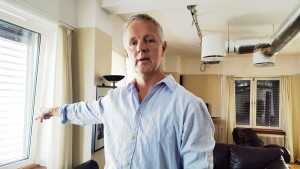
Shards of glass flew around the room, big splints got stuck in the wall. Some of Bjørn’s colleagues dropped to the floor, though none of them were injured.
“So then all of us sat here and understood that it was a real bomb, not an accident. We could see the flash. It was an enormous sound, I thought the whole station would collapse.” The total damage eventually cost the station 12–13 million kroners to repair. Bjørn remembers thinking they needed to do something to evaluate the situation: “Three things: What happened, where, and how big is the impact.” They immediately went down to the fire trucks but all the garage doors had been blown down, preventing them from driving out. Bjørn put on his uniform, gathered radios and equipment, and went to the third floor to use the exit door there. “It was a huge accident site, there were many people screaming, and many injured, some dead. They were civilians. I had to grasp the scope of how many were injured, where could we bring in our fire trucks, that was in focus,” he recounts. Eight people died in the explosion, 9 were seriously injured, and approximately 200 people suffered other injuries.
“I was the first ranking emergency officer to arrive on the scene, before the police leader and before the ambulance leader. I got there around 3–4 minutes after the explosion and the others came a little after.” Bjørn spoke to the security in the area to try to gauge the severity of the situation: “I thought that the government offices were full, so I believed there could have been hundreds there dead or injured.” Since this was the middle of summer vacation and it was 15:26 on a Friday afternoon, many people had fortunately left work already.
Bjørn Arnesen: “I felt like I’d seen it before on TV, from the Middle East, Iraq, like I had experienced this … I wasn’t actually scared, I felt prepared. But I was shocked—we were victims ourselves.”
Bjørn was momentarily concerned there could be another explosion, but he felt that even if there had been another bomb it would have detonated simultaneously because of the bomb’s magnitude.
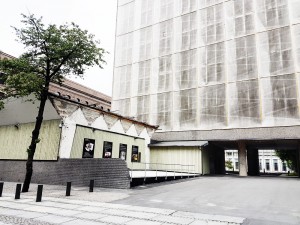
The accident site in Regjeringskvartalet. “…There were many people screaming, and many injured, some dead. They were civilians. I had to grasp the scope of how many were injured, where could we bring in our fire trucks, that was in focus,” Bjørn recounts.
Minutes after Bjørn’s arrival, many firemen, police and paramedics showed up. “The other officers from the fire department arrived and we decided what we should prioritise. The R4 building had started to burn. Within an hour we had 100 firemen, so we had many resources available in a short time.” The R4 building (Einar Gerhardsens plass 1) was burning, yet the firemen weren’t immediately allowed inside due to protocol. The police have a specially designated bomb group who inspected the building first, so the firemen attended to the fire from the outside. “After the bomb group, we got clearance to go inside. We went in to evaluate with around eight firefighters, and found injured people. One injured person on the second floor and one on the fifth. Only two people were in the building when we went in.” The fire gradually began to burn inside the building, so they extinguished it from the inside. “We helped get injured people to the hospital. Then it was the same with høyblokka [the tower building housing the government offices], the bomb team went inside to check the building and we went inside after and found five people. One seriously injured person on the fifth floor who we rescued with a ladder, two people who weren’t as seriously injured were brought out, and two were unharmed, so five people were in høyblokka.”
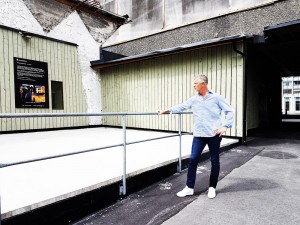
This used to be the reception office of Regjeringskvartalet.
Bjørn Arnesen: “Reports started to come from Utøya.”
On the island of Utøya, a second attack occurred two hours later at a summer camp organised by AUF, the youth division of the Norwegian Labour Party (AP). Anders Breivik, a 32-year-old Norwegian right-wing extremist, opened fire at the camp’s participants. He killed 69 people, seriously injuring at least 33 young people, and a large number of persons sustained psychological problems. Breivik was wearing a homemade police uniform and carrying false ID.
Bjørn Arnesen: “It took time, but I gradually understood that this could have been the same guy, the one my colleague saw walk by dressed as a policeman with a gun.”
The man Bjørn’s colleague had seen right before the explosion was in fact Breivik. “He walked past here and he had parked his escape car nearby.” When Bjørn heard about Utøya for the first time, it occurred to him that it could have been the same man from earlier and he brought it to the police. His colleague was called in to make a statement.
Standing in Solidarity
“We got everything under control quite quickly in Regjeringskvartalet, the fire was out, the building had been searched, we didn’t find any more injured, and at perhaps 9 or 10 at night we were finished.” Bjørn continues, “we understood that this was a crisis, so following that we had some colleague support so we could talk about our feelings.” The firemen have secure professional relationships that they can draw upon for support: “We have very good colleagues, we create wellbeing and security. Many leaders here are very good at not just being tough firemen, also showing vulnerability.”
With 20 firefighters, Oslo’s main fire station is the largest of eight in the city. It responds to around 2,500 emergencies a year, making Bjørn one of Norway’s most experienced firemen. “I’ve been a fireman for many years, so everything you do regularly becomes instinctual,” says Bjørn, “I’m used to evaluating the scope of what has happened and making decisions, that helped me a lot”. The firemen regularly have exercises to prepare for emergencies. “It’s important to have good cooperation with the other emergency departments, police, paramedics, at the leadership level. We know each other, we’ve been on courses together, which is very important.” Years prior to the attacks, at a media training exercise at NRK, Bjørn was asked to hypothetically go through a case of a terror attack on the very same building: “Ten years ago I got that case, so it prepared me mentally.”
“We must continue to live.”
The next day, Bjørn and his wife were due to have a dinner party with their friends and relatives but his wife didn’t feel it was right to have a party, she felt too devastated to go through with it. “We began to argue, I tried to convince her that we must continue to live”.

On the Monday morning, they decided to visit ‘Rosetoget’ at Rådhusplassen: “There were over 200,000 people gathered there with roses. That was the moment I first really understood the scope of what had happened. It had touched the whole of Norway. Not just Norway in fact; it had touched huge parts of the world that such things could happen in Norway, which is a peaceful place.”
At ‘Rosetoget’, a vigil where people united in the streets holding flowers, thousands massed in Oslo in memory of the victims of the attacks. Norwegians everywhere gathered in solidarity, and similar vigils took place in cities all across the country. When former Prime Minister Jens Stoltenberg addressed the nation, he said: “We are still shocked by what has happened, but we will never give up our values. Our response is more democracy, more openness, and more humanity.”
The 22 July Centre
The 22 July Centre opened in 2015 and houses an exhibition that tells the story of the terror attacks on 22 July 2011, and society’s response to the attacks in its aftermath. The events of that day are produced in images, texts, films and exhibits. It is located in the high-rise building in the government centre, at Akersgata 42. The centre can be visited Monday–Saturday between 10:00 and 17:00, and is open on Sundays from 12:00–16:00.
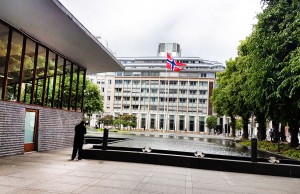
Interview: Dina Johnsen / Text: Georgina Berry, Trine Johnsen / Photos: Dina Johnsen
